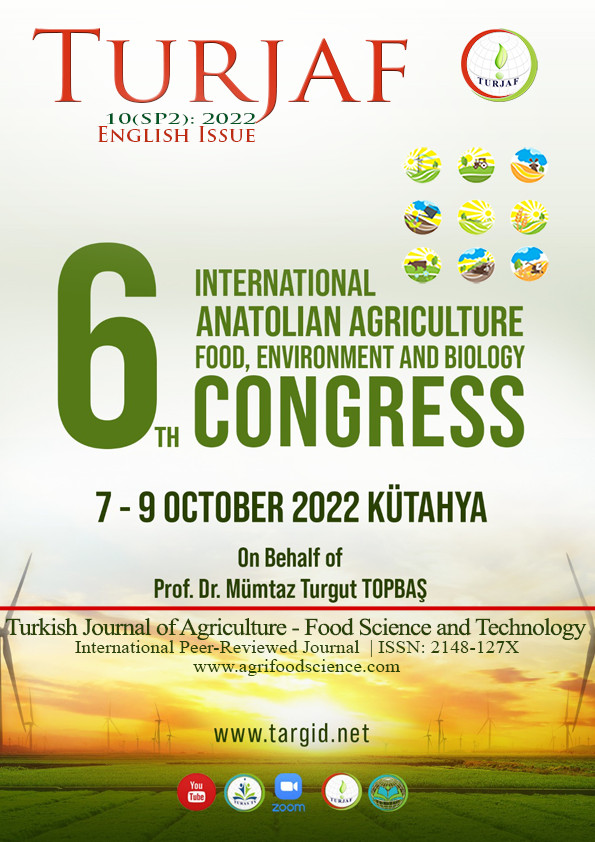Alkali Extraction of Phenolic Compounds from Tomato Peel: Optimization of Extraction Conditions and Investigation of Phenolic Profile by LC-MS/MS
DOI:
https://doi.org/10.24925/turjaf.v10isp2.2966-2976.5646Keywords:
Tomato Peel, Antioxidant Capacity, Optimization, Alkaline Extraction, Phenolic ProfileAbstract
With the increasing world population, the food need of humanity is increasing proportionally. Agricultural wastes constitute an important potential for the global economy as they contain components that are less preferred to be consumed as food due to their low bioavailability due to their indigestion in the human body or due to their sensory properties, but that may be beneficial to human health such as antioxidant substances and antimicrobial agents. The benefits of using these wastes in terms of economy and reducing environmental pollution are obvious. Tomato, which is one of the most used agricultural products in our country and the world, is processed by removing its skins in the processing of many products. Tomato skins cause serious environmental problems and economic losses unless they are valorized. In this regard, this study aims to optimize the extraction efficiency, the antioxidant capacity, and total phenolic content of the tomato peel extract according to the independent variables of temperature and time, while the alkaline extraction process applied to tomato skins is cheap and industrially applicable. Using response surface methodology, the highest extraction yield (28.77 g/100 g dry extract), total phenolic content (3819.32 mg GAE/100 g dry extract), and total antioxidant capacity (2737.82 µmoL Trolox/100 g dry extract) were obtained under extraction conditions at 100°C for 5.26 h. According to LC-MS/MS results, tomato skins treated with alkali contain various phenolic acids and some flavonoids. The phenolic component found in the highest amount in the tomato peel extract was determined as p-coumaric acid (429.99 ± 38.53 mg/100 g dry extract). Other important phenolic components are ferulic acid (12.44 ± 2.06); 4-hydroxy benzoic acid (7.13 ± 1.01) and vanillin (2.47 ± 0.22) mg/100 g dry extract.Downloads
Published
30.12.2022
How to Cite
Kızılırmak Esmer, Özlem, Koçak, E., Cevrem, A. E., & Kıcıkoğlu, O. (2022). Alkali Extraction of Phenolic Compounds from Tomato Peel: Optimization of Extraction Conditions and Investigation of Phenolic Profile by LC-MS/MS. Turkish Journal of Agriculture - Food Science and Technology, 10(sp2), 2966–2976. https://doi.org/10.24925/turjaf.v10isp2.2966-2976.5646
Issue
Section
Research Paper
License
This work is licensed under a Creative Commons Attribution-NonCommercial 4.0 International License.









